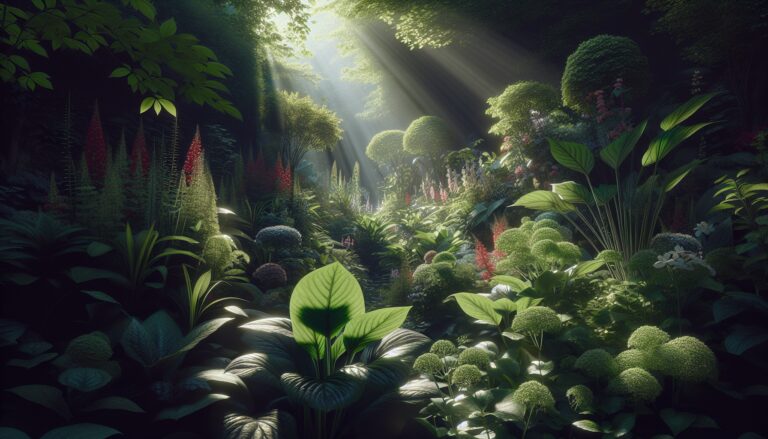Argomenti trattati
Understanding shade levels in your garden
When planning a shade garden, the first step is to understand the different levels of shade present in your outdoor space. Shade can be categorized into four main types: partial, dappled, moderate, and heavy shade. Each type influences the choice of plants that will thrive in your garden. For instance, partial shade allows for some sunlight, making it suitable for a wider variety of plants, while heavy shade requires more specialized selections.
Choosing the right plants for your shade garden
Once you have assessed the shade levels, the next step is to determine whether your garden experiences dry or damp shade. This distinction is crucial as it affects soil moisture and plant selection. For damp shade, consider planting ferns, bleeding hearts, and cowslip, which thrive in moist conditions. Conversely, for dry shade, opt for resilient plants like anemones, euphorbia, and hellebore that can withstand less moisture.
Designing your shade garden
Design plays a vital role in creating an inviting shade garden. Incorporating shrubs like hydrangeas can add dimension and color, while ground cover plants such as pachysandra and creeping thyme can help combat dull patches. To enhance visual interest, consider adding variegated hostas or even a few taller plants like Japanese maple to create layers. Additionally, integrating garden accessories such as bird baths, sculptures, or small water features can bring life and character to your shaded retreat.
Maintaining your shade garden
Maintaining a shade garden requires attention to soil health and moisture levels. Regularly adding nutrients and mulch can help create a thriving environment for your plants. Interestingly, shaded areas often retain moisture better than sunny spots, reducing the frequency of watering. However, keep a close eye on new plantings, as they may need more water to establish their roots. Furthermore, consider incorporating lighting solutions like solar stakes or string lights to illuminate your garden and enhance its evening charm.
Wildlife and sustainability in shade gardens
A shade garden can also serve as a natural habitat for local wildlife. By adding feeders, birdhouses, and water sources, you can attract various species, enriching your garden’s ecosystem. Embracing a more natural aesthetic allows for a less manicured look, which can be both beautiful and sustainable. Allowing plants to grow freely can lead to a vibrant, self-sustaining garden that requires less maintenance.

